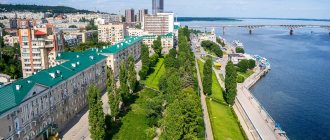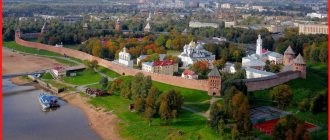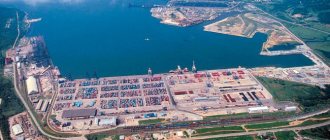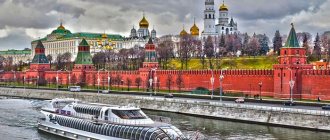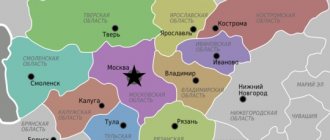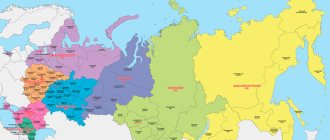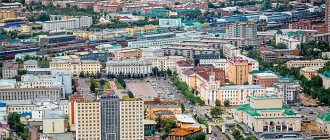The Bryansk region was formed by the Decree of the Presidium of the Supreme Soviet of the USSR on July 5, 1944. It included 26 western districts of the Oryol region. The territory of the region extends from west to east for 270 kilometers, and from north to south for 190 kilometers. The coordinates of its extreme northern and southern points are 54° 05′ and 52° 10′ north latitude, the extreme western and eastern points are 31° 10′ - 35° 20′ east longitude.
Of all the central regions of the Russian Federation, the Bryansk region extends most deeply to the west into the borders of two neighboring fraternal republics: Ukraine and Belarus.
Where is Bryansk
Many people believe that Bryansk is located on the territory of Belarus. If you look at the map, you can see that it is located in the western part of the Central Russian Upland at an altitude of 250 meters above sea level. Having looked at where the city of Bryansk is located, you will see that it is located on the border of three Slavic states - Russia, Ukraine, and Belarus. The exact location is where two small rivers Snezheti and Bolva flow into the Desna.
Bryansk lies surrounded by numerous settlements: at a distance of 129 km from Orel, 232 km from Kaluga, 186 km from Zheleznogorsk, 173 km from Klintsy, 264 km from Kursk, 329 km from Vyazma, 384 km from Moscow.
BRYANSK
BRYANSK , city in Russia, adm. the center of the Bryansk region, forms an urban district. Us. 402.7 thousand people (2019; 415.7 thousand people in 2010; 431.5 thousand people in 2002; 452.2 thousand people in 1989; 394.2 thousand people in 1979; 317.5 thousand people in 1970; 207.3 thousand people in 1959). Located in the west part of the Central Russian Upland, on the Desna River, at the confluence of the Bolva and Snezhet rivers. Railway junction to Moscow, Kyiv (Ukraine), Gomel (Belarus), Smolensk, Orel and Vyazma; There are three railway stations in the city (Bryansk-Orlovsky, Bryansk-Lgovsky and Ordzhonikidzegrad). The junction of federal highways Moscow - Kyiv, Bryansk - Novozybkov - Kobrin (Belarus) and Orel - Roslavl - Rudnya. The Druzhba oil pipeline (Samara - Bryansk - Mozyr) and the gas pipelines Dashava (Ukraine) - Moscow, Shebelinka (Ukraine) - Orel - Smolensk (with a branch to Gomel) pass through Bashkortostan. B. consists of 4 separate districts (separated by the Desna, Bolva and Snezhet rivers): Sovetsky (the administrative and historical center of the city), Fokinsky (at the Bryansk-Lgovsky railway station), Volodarsky (at the Bryansk railway station -Orlovsky) and Bezhitsky (until 1956 a separate city; in 1936–43 Ordzhonikidzegrad).
Story
On the territory of modern B. is known for a Paleolithic site, a settlement and settlement of the Early Iron Age, and a settlement of the 1st millennium AD. e., Romny culture, 2 ancient settlements and settlements of ancient Russian. time. Presumably, the city was originally located on the Chashin Kurgan settlement (the conditional date of the city’s foundation is 985; archaeological materials are from the 11th–15th centuries), from where it was moved to the Pokrovskaya Gora settlement (archaeological materials no earlier than the 2nd half of the 12th century). It was first mentioned in the Ipatiev Chronicle as Dobryansk when describing the events of the beginning. 1147. Was part of the Chernigov principality, from the middle. 13th century center of the Bryansk Principality. In 1310 it was devastated by the Mongol-Tatars. In 1356 he was captured by the Lithuanian prince. Olgerd, after 1357 became part of the Grand Duchy of Lithuania. From the end 15th century the name is used B. In 1500 during the Rus.-Litov. Russian is busy with war. troops, according to the Moscow Truce of 1503 it was annexed to the Russian state. Played an important defensive role in the southwest. borders of the country. In 1607, he withstood the siege of the troops of False Dmitry II for more than a month. From the 17th century There was a large Svensk fair near B. The district town of Kyiv (1708–27), Belgorod (1727–78) and Oryol (1778–1920; until 1796 - Oryol governorship) provinces.
Founded in 1783 (nowadays), it was a major supplier of guns for Russia. armies; from 1873 near B. in the village. Bezhitsa operated the Bryansk plant (nowadays). The lines of the Orlovo-Vitebsk (1868), Polesskaya (1887), and Moscow-Kievo-Voronezh (1899) railways passed through Bolshaya. During the First World War of 1914–18, a garrison (about 50 thousand people) was stationed in Byelorussia. B. is the center of the Bryansk province (1920–29), the regional center of the Western (1929–37) and Oryol (1937–44) regions. During the Great Patriotic War, on October 6, 1941, Germany was occupied. troops, heavily destroyed, liberated on September 17, 1943 (in 1945 included in the list of 15 historical cities subject to restoration). Since 1944, the center of the Bryansk region, a major center of mechanical engineering. In 1950, the village entered the boundaries of B. Uritsky, in 1956 - the city of Bezhitsa and the village. Settlement. City of Military Glory (2010).
Architecture
On the high right bank of the Desna there is a historical site. the core of B. with churches on the sites of ancient architecture. dominants: Pokrovskaya (late 17th – early 18th centuries), Vvedenskaya (1702–05), Gorne-Nikolskaya (1751; bell tower, 1st half of the 19th century) and Spaso-Grobovskaya (1904). In the end 17th–18th centuries stone construction was carried out in the forms of Baroque (Church of the Resurrection, 1739–41), Naryshkin Baroque (Church of the Trinity in Bezhichi, 1st half - mid-18th century), early classicism (customs, 2nd half of the 18th century ., is the oldest civil building of B.).
Holy Dormition Svensky Monastery near Bryansk. Gate Sretenskaya Church. 1670–90s Photo by L.C. Maciel-Sanchez
Regular plan 1780 means. adjustments in 1802 and 1808 were carried out during the 19th century: Ch. an axis with three square squares strung on it connects the mountainous part of the city with the coastal one. Among the architects monuments in the style of classicism - the Bryansk Arsenal complex (late 18th–20th centuries), the house of the general director of the Bryansk Arsenal and the barracks of the Dorogobuzh regiment (both - late 18th century; the barracks in their modern form were erected in 1898), c. Nativity of the Virgin Mary (1827–31); buildings in neo-Russian style - mountains. hospital (last quarter of the 19th century), women's gymnasium (1907). In the 1920s large objects were erected in the forms of constructivism: the House of Soviets (1925–26, architect A.Z. Grinberg), the House of Communications (1930–31, architect Grinberg, etc.), etc. Construction and improvement of Bolshoi, with special attention to system of boulevards, parks and public gardens (green massif "Sudki", grove "Nightingales" with 300-year-old oak trees, etc.), are being implemented according to the plan of 1968. Monuments: Military and partisan glory (1966, sculptor A. P. Faydysh-Krandievsky, architects M. O. Barshch, A. N. Kolchin), pilot P. M. Kamozin (sculptor M. G. Manizer, architect A. P. Velikanov), 1000th anniversary of Bashkortostan (sculptural group “Peresvet and Boyan” ) and etc.
Near B., in Suponevo, is the Holy Dormition Svensky Monastery for men, founded in the 1280s. Bryansk prince Roman Mikhailovich Stary. The oldest buildings are the Assumption Cathedral [1560–70s; rebuilt in 1712–15, 1749–58, one of the best buildings of the architect. I. F. Michurina with a unique seven-tier iconostasis early. 18th century, among the icons - “Our Lady of Pechersk (Svenskaya)”, 13th century, now in the State Tretyakov Gallery], c. Anthony and Theodosius of the Pechersk (1560–70s; rebuilt in 1681 and 19th centuries) - blown up in 1930. The monastery was closed in 1924, revived in 1992. The gates of the Sretenskaya Church have been preserved. (1670–90s) and Spaso-Preobrazhenskaya Church. (17th century; rebuilt in 1734–42).
Centers of science and culture
An important scientific, educational and cultural center. Research institutes: “Izoterm” (1990; design, development, production and maintenance of equipment for mechanical engineering, metallurgy and railway transport), “NIIPineftegazstroymash” (2002; construction and reconstruction of enterprises of the fuel and energy complex). Among the universities are state universities: technical (history dates back to 1929; current status since 1995), engineering and technology (founded in 1930 as the Forestry Institute; current name and status since 2015), named after. Academician I. G. Petrovsky (founded in 1930 in Novozybkov as a pedagogical institute; since 1976 - in B.; modern name and status since 2001); Institute of Management and Business (non-state; 1999); branches of a number of Moscow universities and institutes. Regional Scientific Universal Library named after. F. I. Tyutcheva (1944).
Museums: state local history museum (1921; includes 13 branches), regional art museum and exhibition center (1968), commander of the partisan detachment D. N. Medvedev (1975), artists brothers S. P. and A. P. Tkachev (1995), folk ethnography and crafts (2001), Literary (with the department “Museum of Kozma Prutkov”); as well as the park-museum of wooden sculptures named after. A.K. Tolstoy (1936) and the memorial complex “Partisan Glade” (1969) with a museum of the history of the partisan movement in the Bryansk region (“Bryansk Forest”, founded in 1983, opened in 1989). Exhibition Hall (2010). Theatres: dramas named after. A.K. Tolstoy (1926), regional puppet show (1972), regional young spectator show (1981), children's and youth "Adults and Children", children's musical "Orpheus". Regional Philharmonic (founded in 1944 as the Concert Bureau; since 1950 Concert and Variety Bureau; modern name and status since 1960); It includes the Druzhba Concert Hall, orchestras: Governor's Symphony (1993; former city chamber), city folk instruments (1996), city brass (2000); academic choir (1995); ensembles: folk music “Vataga” (2004) and “Nadeya” (2009). Palace of Children's and Youth Creativity named after. Yu. A. Gagarin (1925). Planetarium (1977). Circus (1975).
Sport
Dynamo Stadium (built in 1924; 10 thousand seats), where the football team of the same name (founded in 1931), which competes in the FNL (Football National League) championship in the 2020/21 season, plays its matches.
Farm
The basis of the city's economy is the service sector, including administrative, transport and logistics services and trade.
Large industrial center. There are heavy engineering plants: “Bezhitskaya Steel” (1935; frames of bogies for freight cars, automatic couplers for freight and passenger cars, etc.), “Bryansksantechnika” (1975; steel water-heating boilers, modular mobile automated boiler houses, automated water treatment plants for water-heating and steam boilers, water heaters for heating water in hot water supply systems, etc.) and transport engineering: Bryansk mechanical engineering (production of mainline and shunting diesel locomotives, spare parts for railway transport), automobile (1958; wheeled chassis, wheeled tractors of high cross-country ability , spare parts).
Among other engineering (road construction equipment, trailers), diesel (machinery and equipment for the construction and repair of main pipelines; repair of construction machines, diesel engines and hydraulic equipment), Bryanskselmash (grain harvesters, forage harvesters, etc.), military ( 1919, in Bryansk since 1946).
Enterprises producing electronic equipment and instrument making are widely represented: “Thermotron-plant” (1965; equipment for railways, subways, solar power plants, oil and gas complex, etc.), “Silicon EL Group” (1958; 2nd place in the Russian Federation in production of microelectronics products for the Ministry of Defense of the Russian Federation; production of semiconductor devices, integrated circuits and power modules), NPO Elektrontekhnika (1995; means of operational-technological communications, industrial automation, access control system; export to the CIS countries), research and production (1958 ; radio measuring instruments, medical equipment, lamps, including street and LED), Bryansk Electromechanical Plant (1958; equipment for military communications, medical and railway devices).
The food-flavoring industry includes a bakery, a dairy and a meat-packing plant, the agro-industrial holding Tsar-Myaso (production of semi-finished meat products and canned food), the Bryansk City Dairy Plant (children's dairy products), the Ocean fish processing plant (sliced and filleted fish in vacuum packaging, dried, salted and smoked fish, as well as various salads and snacks), the Bryankonfi confectionery factory, the Bezhitsky Food Processing Plant enterprise (flour confectionery products), (1899, modern name and status since 1987; vodka, balms, tinctures, also lemonade; capacity over 1.4 million decalitres of strong alcoholic beverages per year), (production of beer, kvass, mineral water and rye malt).
Production of phosphate fertilizers and adsorbents ("Agricultural-Industrial Enterprise - Phosphates"), paints, varnishes and enamels (Bryansk Paint Plant), cardboard packaging and other cardboard and paper products (Bryansk Paper Factory), woolen fabrics, incl. suits, school uniforms (Bryansk Worsted Factory, 1956), workwear, bed linen and home textiles (Bryansk social and rehabilitation enterprise of the All-Russian Society of the Deaf, 1944), shoes (Stella Plus Shoe Enterprise). Railway enterprises transport (locomotive and car repair depot, etc.).
Population of Bryansk
The population of Bryansk is 402,675 people. In terms of national composition, the main part are Russians and Ukrainians. In recent years, there has been a decrease in population growth, which can be seen from the table data.
| 2005 | 2006 | 2007 | 2008 | 2009 | 2010 |
| 424 100 | 420 000 | 416 200 | 413 900 | 411 798 | 415 721 |
| 2015 | 2016 | 2017 | 2018 | 2019 | 2020 |
| 407 256 | 405 921 | 406 553 | 405 723 | 404 793 | 402 675 |
History of Bryansk
The history of its origin goes back to the last quarter of the 10th century. The city was founded as a fortress. Served as protection during the invasion of the Mongol-Tatar yoke. The dense forests here scared away enemies.
During the reign of Vladimir Monomakh, the “Straight Road” was built, which contributed to the strengthening of Rus'. During the attack of the Mongol-Tatars in XIII, the city was moved from Chashin Kurgan to Pokrovskaya Gora.
In 1356, the city, destroyed by the Tatars, was annexed to the Principality of Lithuania. Bryansk was returned to the Russian state by Ivan III in 1500. In 1607, the city was besieged twice by the troops of False Dmitry II.
Peter I built a shipyard in Bryansk. In 1783, factories for the production of field and siege artillery were introduced, and a joint-stock company was founded. At the end of the 19th century, Bryansk became a major railway center. In 1930 it received the status of a city of regional subordination.
From 1941 to 1943 the city was under the occupation regime of Nazi Germany. In 1944, Bryansk became the administrative center of the Bryansk region. In 1950, the village of Karachizh and the village of Uretsky joined. In 1956, Bezhitsa became a district of the city.
Area of Bryansk region
The Bryansk region has an area of 34.9 thousand square kilometers. In terms of territory, it exceeds a number of foreign countries, such as Belgium (with a territory of 30.5 thousand sq. km.), the Netherlands (34 thousand sq. km.), Albania (29 thousand sq. km.), Haiti ( 28 thousand sq. km.), Israel (21 thousand sq. km.), Lebanon (10.4 thousand sq. km.).
The Bryansk region is larger in size than Armenia (the territory of which is 29.8 thousand sq. km.), Moldova (33.8 thousand sq. km.), Belgorod, Voronezh, Vladimir, Ivanovo, Kaluga, Kurdish, Oryol, Tambov, Tula and some other regions of the Russian Federation.


